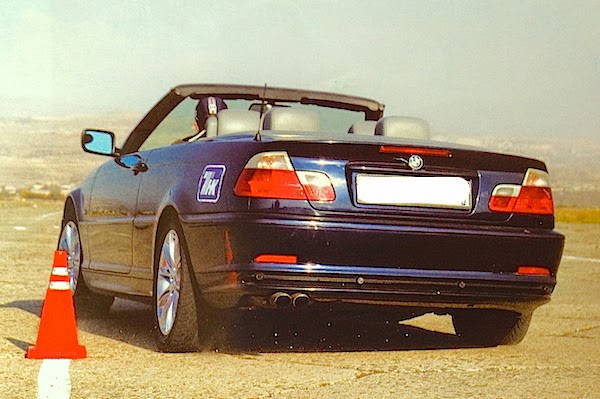In Armenia, Hyundai Tuscani is available in two versions: with 2L 4-cyliner engine with a capacity of 143HP and 2.7L V6 engine with a capacity of 172HP. Although these two versions are equipped with different engines, they share the same set of standard options: central locking, air conditioning, disk brakes on all wheels, air bags and split exhaust pipes made of chromium. The car is very attractive from every side and has a very modern appearance. The smooth body lines adds elegance to the model, which makes it distinguishable from other coupes. In the images, the “Tuscany” looks slightly bigger, but in reality, it’s quite compact and has a low height. The features of Hyundai Tuscani allow the car to be easily considered as a roadster, because the rear window (along with the trunk lid) is actually the third door.
This car is also attractive on the inside. Compared with Hyundai Tiburon, the “Tuscani” has got quite a different interior. The dashboard now has a new appearance- it is equipped with an odometer, the indications of which are shown on an electronic display. The panel is stretched along the length of the cabin- it is divided by two holes of the heating system and control buttons. The stereo system is located in the center of the console panel with the adjustment knobs of the heating system and air conditioning.
The handle of the gearshift has not only a short stroke, but also a comfy location, so the driver can make a smooth shifting at any time. The seats of the “Tuscani” have scoop-like shape and are very comfortable.
The interior trimming is made of high-quality fabric, which keeps the salon warm in winter and cool in summer. The “Tuscani” has four seats. The back seats would be more appropriate for children and can additionally be used as a storage place.
Specifications of Hyundai Tuscani 2.7:
Length-4395mm, width-1760mm, height-1330mm.
Maximal weight- 1740kg
Engine-V6
Engine capacity- 172HP/6000
Maximal torque- 245 N m/4000
Maximal speed 220km/h
Transmission- manual 6-speed.
Fuel consumption per 100km- 10.3-10.4L
Fuel tank volume- 55L


















































